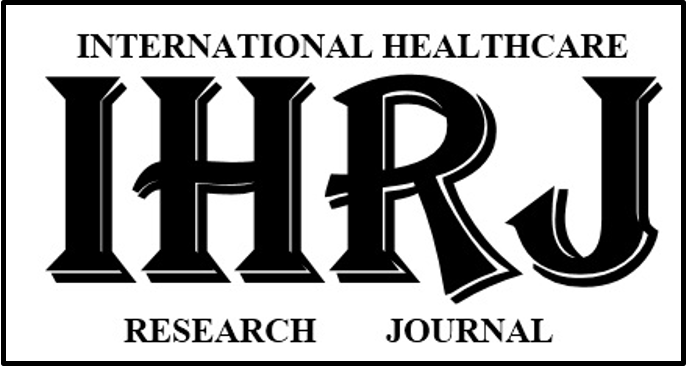Role of Alexithymia in Predicting Self-Efficacy in Academic Students of a North Indian Institution: A Cross Sectional Study
Abstract
INTRODUCTION: Alexithymia is a cognitive-affective style and a personality construct that is associated with various physical and psychological disorders. It refers to a personality trait associated with difficulties with identifying or describing feelings, mental imaging and fantasy, and external cognitive orientation
AIM: To access the problem of alexithymia among the Academic (Dental and Ayurvedic) students of an Institution in North India.
MATERIALS AND METHOD: A questionnaire based cross-sectional survey was carried out among the medical students of D.J. Group of Institutions, Modinagar, Ghaziabad district, Uttar Pradesh, India. Ethical approval was obtained from the Institutional Review Board, Modinagar and informed consent was obtained from all the study participants prior to the study.
RESULTS: The questionnaire based study was carried out among 252 medical students of D.J. Group of Institutions, Modinagar, Ghaziabad district, Uttar Pradesh, India. Out of which 113 students were of Ayurveda and 139 were dental students. The inter group comparison of respondents according to course of study in which majority of the Ayurveda students were having significant result for the alexithymia problem.
CONCLUSION: This study demonstrates that alexithymia plays significant role in decreasing self-efficacy in academic students. As alexithymia is high in college students and affects self-regulation, goal orientation, and academic function, we suggest that mental physicians routinely evaluate medical college students for alexithymia.
Downloads
References
Taylor GJ, Bagby RM, Kushner SC, Benoit D, Atkinson L. Alexithymia and adult attachment representations: associations with the five-factor model of personality and perceived relationship adjustment. Comprehensive Psychiatry 2014; 55(5):1258–68.
Faramarzi M, Azadfallah P, Book HE, Tabatabaei KR, Taheri H, Shokri-shirvani J. A randomized controlled trial of brief psychoanalytic psychotherapy in patients with functional dyspepsia. Asian J Psychiatr 2013;6(3): 228–34.
Faramarzi M, Kheirkhah F, Shokri-Shirvani J, Mosavi S, Zarini S. Psychological factors in patients with peptic ulcer and functional dyspepsia. Caspian J Inter Med. 2014;5(2):71–6.
Faramarzi M, Shokri-Shirvani J, Kheirkhah F. The role of psychiatric symptoms, alexithymia, and maladaptive defenses in patients with functional dyspepsia. Indian J Med Sci. 2012;66(1-2):40–8.
Cox BJ, Swinson RP, Shulman ID, Bourdeau D. Alexithymia in panic disorder and social phobia. Compr. Psychiatry 1995; 36(3):195–8.
Taylor GJ. Bagby RM. New Trends in Alexithymia Research. Psychother Psychosom 2004; 73(2):68–77.
Bagby A, Taylor RM, Parker GJ, Dickens SE. The development of the Toronto Structured Interview for Alexithymia: Item selection, factor structure, reliability and concurrent validity. Psychotherapy and Psychosomatics 2006;75:25-39. doi:10.1159/000089224.
Faramarzi M, Salmalian H. Association of psychologic and non-psychologic factors with primary dysmenorrhea. Iran Red Crescent Med J 2014; 16(8):e19307.
Parker JDA, Austin EJ, Hogan HJ, Wood LM, Bond BJ. Alexithymia and academic success: examining the transition from high school to university. Pers Individ Differ 2005; 38(6):1257–67.
Sepahvand E, Zakiei A, Rafieian K, Roumani S, Komasi S, Reshadat S. The intervening role of alexithymia in the relationship between attachment styles and test anxiety among gifted high school students. Korean J Fam Med. 2015; 36(4):174–9.
Delavar MA, Salmalian H, Faramarzi M. Pasha H, Bakhtiari A, Nikpour M, Ledari FM. Using the objective structured clinical examinations in undergraduate midwifery students. J Med Life 2013;6(1):76–9.
Bataineh MZ. Academic stress among undergraduate students: the case of education faculty at King Saud university. Int Interdiscip J Educ. 2013; 2(1):82–8.
Twenge JM, Gentile B, DeWall CN, Ma D, Lacefield K, Schurtz DR. Birth cohort increases in psychopathology among young Americans, 1938–2007: a cross-temporal metaanalysis of the MMPI. Clin Psychol Rev. 2010; 30(2):145–54.
Faramarzi M, Kheirkhah F, Azadfrouz S. Psychological predictors of premenstrual syndrome. Int Neuropsychiatr Dis J. 2014; 2(6):368–81.
Kalinin VV, Zemlyanaya AA, Krylov OE, Zheleznova EV. Handedness, alexithymia, and focus laterality as risk factors for psychiatric comorbidity in patients with epilepsy. Epilepsy Behav 2010; 17(3):389–4.
Lee SA, Lee SM, No YJ. Factors contributing to depression in patients with epilepsy. Epilepsia 2010; 51(7):1305–8.



